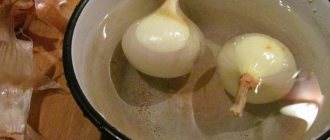Man learned about the first pasta back in the fourth millennium BC. This can be judged from images found in Egyptian tombs. In addition, noodles or pasta in some countries were used not only for food, but also to participate in magical rituals and in the treatment of diseases. Recently, pasta has come in a variety of shapes and sizes. At the same time, it may seem that they, i.e. dry dough can be stored indefinitely and not spoil. However, pasta has a finite shelf life.
Sometimes pasta boiled in salt water has an unpleasant smell or taste. This suggests that for some reason their quality has deteriorated. Therefore, in order not to reduce their suitability, you should know how to store them correctly. This, as well as how long pasta can be stored, will be discussed below.
Type of pasta and pasta
How to properly store pasta and is it possible to buy these flour products for future use?
Pasta is a hygroscopic product. This means that pasta is able to absorb odors, moisture and other impurities that can affect the quality of the product. It is necessary to store pasta in a dry, dark place, despite the fact that pasta is insensitive to low temperatures and can be stored in outdoor pantries, temperature changes should still be avoided. It is not recommended to store pasta on the top shelves in the kitchen, as fumes and high temperatures can spoil the product.
Deadlines
| Varieties | Shelf life (months) | ||||
| Packed | Opened | By weight | Boiled (days) | ||
| Fridge | Room temperature | ||||
| From flour and water | 36 | 18 | 18 | 3 | 1 |
| Egg | 12 | 6 | 6 | 3 | 1 |
| Dairy | 5 | 2 | 2 | 3 | 1 |
| Soybeans | 5 | 2 | 2 | 3 | 1 |
| Colored | 24 | 12 | 12 | 3 | 1 |
There are varieties A, B, C, based on the type of wheat for flour: hard, soft, baking, respectively. The most optimal, healthy option is A. Such pasta will not harm your figure and will retain its integrity and elasticity even after cooking.
Baking flour will quickly boil, stick together, and lose shape. The variety has nothing to do with the shelf life, since the main influence is exerted by additional factors.
The characteristics that determine how long pasta products will remain good are the conditions of their maintenance and the presence of perishable additives.
Storing pasta in packaging from the manufacturer
As a rule, pasta is not packaged in airtight containers, so the pack itself has little effect on the shelf life of pasta (as a rule, both in a closed package and already unpacked, the shelf life of pasta is about 3 years). Plastic packaging is designed to protect against moisture and foreign odors; the main advantage of such packaging is considered to be light weight and the fact that the quality of pasta can be assessed visually. Cardboard packaging helps maintain the shape of pasta and protects the product from physical impact. Despite the fact that manufacturers equip packaging with adhesive tapes on plastic packs, and specially shaped closing labels on cardboard packages of pasta, it is best to store flour products in containers specially designed for this purpose.
What to do if the expiration date has expired?
People remember a forgotten pack of pasta when it’s time to clean out a closet or pantry. The fact of delay is confirmed by the labeling of the goods. But before throwing away the contents of the package, you need to carefully inspect the product.
You should be wary:
- musty smell;
- moldy fragments;
- moths, worms, bugs and other living creatures in a pack;
- small fragments at the bottom of the package.
If no visible cause of unsuitability is found, you can boil some pasta and taste it. It is not safe to endlessly increase the shelf life of pasta.
Tip of the day
As you pour the pasta from the package into a container, cut off a piece of the package with a date indicating the expiration date and place it on top. During the next inventory check, there will be no doubt about the suitability of the products.
Storing pasta in plastic containers
The advantages of plastic are affordability, light weight, availability of a huge range of colors and sizes, resistance to temperature changes and physical impact (they do not break if dropped), flexibility and hygiene. As you can see, there are many explanations for the popularity of plastic containers. The disadvantages include the fusibility of the product (sensitivity to high temperatures), changes in the quality of plastic over time (plastic changes color and shape, and may crack).
Shelf life of pasta dishes
If you prepare a product with various additives, their presence significantly reduces the duration of storage in the refrigerator. The recipe for everyone's favorite navy pasta includes minced meat:
- boil 1.5 liters of water, adding 0.5 tsp. salt;
- add 250 g of pasta, mix;
- boil them for 7-10 minutes;
- melt 70 g of butter in a frying pan;
- put finely chopped onion (1 head) and minced meat (400-500 g) there;
- stir, add salt and pepper;
- fry over medium heat for 15 minutes, stirring constantly;
- pour the pasta into the frying pan, mix it with the minced meat and fry for another 5-7 minutes.
Pasta prepared in this way in the refrigerator is stored for no longer than a day. Adding meat to a product reduces the shelf life of the dish. With longer storage there is a risk of poisoning.
Attention! Boiled pasta is often mixed with cheese, butter or an egg-based sauce. This combination of products does not allow storing the dish for longer than 10-12 hours.
Storing pasta in glass containers
Unlike plastic, glass containers for storing pasta have a number of advantages, such as durability, environmental friendliness, the ability to see the products stored in this container, and the density of the material guarantees tight closure. But the advantages of glass storage containers also provide some disadvantages. Thus, the tightness of the vessel will not allow storing products that require ventilation, and transparency will not allow storing products that are afraid of direct sunlight. The fragility of the glass and the rather large weight of the container itself can also be considered disadvantages.
Storage conditions
The most important thing is to ensure the dryness of the room where the pasta is stored. Humidity is destructive; it causes the product to become soggy, lose its elasticity and taste. To save properties, it is necessary to provide the following conditions:
- If a large stock is stored, it is necessary to take preventive measures against insects and rodents, since flour products are their favorite delicacy.
- The room must be clean, with functioning ventilation;
- Temperature regime – up to 30 °C. Changes will cause condensation, the product will become damp, and mold, cracks, and crumbs may appear.
- Humidity also promotes the growth of mold fungi, so it should not be higher than 70%.
- It is advisable to maintain the integrity of the original packaging or transfer the product to a hermetically sealed container. It will protect you from dampness, pests, and surrounding odors.
IMPORTANT! To preserve its original properties, it is necessary to ensure dryness and optimal temperature conditions.
Home conditions for keeping pasta should be similar. The best place would be a closed cabinet in the kitchen, away from light sources, heat, medicines, household chemicals, and products that emit strong odors.
It is also worthwhile to dwell on the storage of opened packaging or product purchased by weight. The best option is to use a clamp on the bag, which will block the access of outside air. Then the shelf life will not be reduced.
The following method is popular: pour it into plastic, ceramic or glass containers, jars with lids, which are placed in the pantry.
It is advisable to consume cooked ones immediately after cooking. If the portion turns out to be too large, after cooling, it is necessary to transfer the finished product into a container with a lid and place it on the refrigerator shelf. There it will remain valid for 3 days. After this, chemical and microbiological changes will inevitably begin to occur, which will make it dangerous.
Storing pasta in metal containers
Metal is a durable, practical and fairly lightweight material used for storing bulk products. To avoid the effects of corrosion, it is often coated with enamel - this gives metal containers additional aesthetic qualities. It is believed that metal containers can impart an unpleasant taste to the food stored in them; in fact, high-quality metal containers do not have this disadvantage.
Can pasta be stored in the refrigerator?
At room temperature, which is usually 18-25 degrees, the shelf life of the boiled product does not exceed 20 hours. If the dish contains sauce or other additives, this time is significantly reduced.
If it is not possible to consume them during this period, it is recommended to use the refrigerator for storage. The temperature regime of the refrigerator compartment will allow you to maintain the freshness of the product, but after removing it, it must be subjected to heat treatment (fry, boil, heat in a microwave or oven).
Attention! Freezing pasta is prohibited. Defrosting will result in loss of structural integrity (the dish will turn into mush).
In containers made of combined materials
A combination of materials is the best solution. In this case, you can get a combination of different materials, focusing on their positive qualities. This way, you can choose a metal container with a glass insert that will perfectly match the style of your kitchen, and the glass will allow you to see what is inside without opening the container. You can choose a lightweight plastic container with a wooden lid - such a jar looks light and very natural.
A high-quality pasta container, regardless of the material used, will serve you for many years and keep your products fresh for as long as possible.
How to choose
There are several rules for choosing pasta that help in purchasing good quality products.
It is best to choose pasta that is in a transparent package (in extreme cases, with a window). Then you can look at them carefully. In addition, the packaging must be checked for its integrity. Make sure that it is tightly closed and contains all information about the product.
Data that must be present on the packaging:
- date of manufacture;
- shelf life;
- type of flour used to make the product;
- product composition (ingredients);
- cooking method and cooking time until done.
Wheat, which is used for production, is divided into three groups:
- A (durum wheat flour),
- B (soft varieties),
- B (bread flour).
A high-quality product has a smooth surface and an amber-yellow color (for products from durum varieties). In this case, the products should not crumble. Crumbs and flour in a pack are an indicator of technological violations in the manufacture of the product.
Sales requirement
The rules for accepting goods for sale are written down in GOST 14849. The document stipulates the rules for product control. It requires that each shipment of goods be accompanied by documents confirming its authenticity and safety. You cannot accept goods if they contain barn pests in the packaging, and the packaging should not show signs of damage to the goods by insects.
Figure No. 15. Products containing insects
If there is a lot of fine flour dust and pieces of pasta in the package, even if the bugs are not immediately noticeable, most likely they have eaten the product.
Figure No. 16. Bug-scarred products with flour dust
They sell goods in a grocery store or grocery department of a store. In a small store, a shelf is allocated for such products; in a medium and large store, they are displayed on racks for self-service.
Figure No. 17. Display of products in the store
Products are listed by manufacturer and cost (cheap at the bottom, expensive at the top), each type of pasta must have a label indicating the manufacturer, net weight of the product, release date and sell-by date.
Sometimes trays with bulk products are installed. Such trays must be equipped with spatulas for the buyer to pick up products and bags for packaging.
Figure No. 18. Trays with bulk products
Most often, such trays are installed in large supermarkets. Small stores sell goods in consumer packaging. Or the seller himself picks up the goods from such a tray (when selling over the counter).
It is not allowed to sell expired, pest-damaged, moldy goods or pasta in damaged packaging. Such products must be immediately confiscated and disposed of.
Requirements for raw materials
To make pasta products, only 3 types of flour are used:
- GOST 26574 describes wheat flour suitable for the manufacture of such products.
- GOST 31463 describes flour specially “invented” for the preparation of this product or pasta flour made from durum wheat.
- GOST 31491 describes flour specially “invented” for the preparation of this product or pasta flour (this time from soft wheat).
In addition to flour, you will also need additional products; flour alone is not enough to prepare the dough. In production you will have to use either egg products or eggs. They are described by 2 standards:
- GOST 31464 describes the requirements for egg products;
- GOST 31654 describes the requirements, but for chicken eggs.
Eggs are standardized by size, weight and yolk height. They must be clean (single spots of contamination are allowed), not chipped, and without signs of mold or decomposition.
If pasta with additives is made, only those vegetables that meet the standards can be used. To prepare pasta, you also need drinking water. It must comply with the requirements of Russian Federation standards describing the quality of water from a central water supply source.
Packaging requirements
Pasta and similar products are not stored or transported in bulk. They are immediately packaged in consumer containers of various sizes.
Materials that are approved for use, that is, contact with food, are suitable for packaging the product:
- carton boxes;
- combi packaging;
- synthetic materials;
- paper bags (bags).
The packaging of pasta must ensure its safety, integrity, and prevent contamination during loading and unloading, during storage and during transportation of goods. Product packaging can be vacuum.
Figure No. 13. Pasta in vacuum packaging, packaged in a mini-production workshop
Consumer packaging includes packaging:
- up to 5 kg;
- from 5 to 30 kg
The container is marked according to GOST. If pasta is delivered not by road, but by rail or by water, and shipped to the North, the packaging rules will be specific. They are described in separate standards.
Production requirements
Lines for the production of pasta and other similar products can be very large and fit on the table.
Figure No. 11. Pasta production line
There are even manual machines for preparing products.
Figure No. 12. Manual pasta making machine
There are modular workshops that are ready to be put into production. But if you purchase or rent premises and equipment, you will have to comply with all the basic requirements for such enterprises regarding sanitation and fire safety. All legal formalities must also be observed (the enterprise is registered, the OKVED code is selected). For the pasta business it is 15:85 – pasta production.
The workshop for the production of these products must meet standards both in terms of dimensions and microclimatic conditions (it must be possible to create the necessary conditions). The height of the production room should be from 3 meters. The remaining geometric parameters (width and height) must correspond to the dimensions of the production line. The premises must ensure the flow of the process (raw materials and finished products are not “taken out through the same doors”).
The enterprise must have a warehouse for finished products with racks. You also need space to store spare parts and equipment. The administrative part must meet sanitary standards (the number of people and area must comply with the requirements of the SES).
The workshop and warehouse must comply with food industry standards and fire safety requirements. These requirements are extensive and require a separate article for description. We do not consider them here.
Transportation requirement
Pasta can be transported by all types of transport, subject to the conditions of transportation on these types of transport. The main condition is that the transport must be covered. The goods are packaged for transportation in accordance with GOST 23285. The transport used to transport the goods must meet several conditions.
It should be:
- intended for transportation of food products (household chemicals, meat and pasta cannot be transported in the same vehicle);
- clean;
- without strong foreign odor;
- free from rodents and barn pests.
Pasta products for transportation are placed on special transport racks in several rows or also, but on pallets:
- bags of paper can be laid out in 7 rows;
- Corrugated cardboard boxes can be installed in 6 rows.
There are conditions under which you can increase the number of rows. This possibility must be indicated by the manufacturer. But in any case, you can transport pasta if pressure of up to 130 g/cm is applied to the bottom row.










